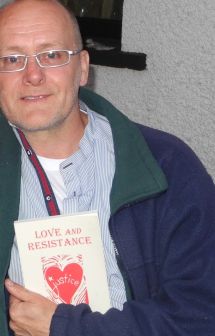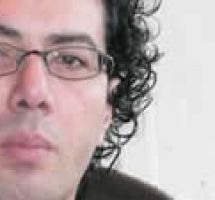The Water You Drink: Safe or Suspect? is a comprehensive manual on the use and conservation of our most  precious resource. Stauffer starts by explaining that although much of our planet is covered with water, most is salt water and large scale desalinization of the oceans is not feasible. Only 3% of our water is fresh and of that, less than 1% is available for drinking water. Water does not disappear; it is a constantly recycling resource. We may drink and pee the same molecules many times in our lives. Much of our accessible water is becoming polluted by the chemical industry, human sewage and salt. What brings that home to me was the World Social Forum, Mumbai, where in a crowded and leaky women’s toilet, I found a poster: YOUR PEE IS SAFER THAN THE WATER 2 BILLION PEOPLE DRINK.
precious resource. Stauffer starts by explaining that although much of our planet is covered with water, most is salt water and large scale desalinization of the oceans is not feasible. Only 3% of our water is fresh and of that, less than 1% is available for drinking water. Water does not disappear; it is a constantly recycling resource. We may drink and pee the same molecules many times in our lives. Much of our accessible water is becoming polluted by the chemical industry, human sewage and salt. What brings that home to me was the World Social Forum, Mumbai, where in a crowded and leaky women’s toilet, I found a poster: YOUR PEE IS SAFER THAN THE WATER 2 BILLION PEOPLE DRINK.
The answer, according to the author, is to first understand the limitations of water availability and then face the fact that we, North Americans, use and waste more water than any other society. The author takes us through the contamination of water, systems of extraction and distribution and how water can be made safe. She provides information and instruction for those of use who get our water from a municipal system as well as for the many Canadians who get their own water from wells and surface water.
There are individual solutions for water safety but most important thing we can do is become active in community water care – keep it public, accountable and safe. The book devotes a whole chapter to the important subject of reducing consumption. Water is a political issue and we need to be political about it. Private systems and privatization of distribution and sources of water are elitist and dangerous. The rich can ignore universal clean water as a social necessity if they are allowed to encourage the privatization of distribution and consumption of our precious resource – because they can, or think they can, always pay for purity and plenty.
The book also covers the increasing use of bottled water for drinking. She says that bottling factories are visited every 12-18 months by The Canadian Food Inspection Agency. It may be no better than your tap (in fact, it may be your tap water) and using it avoids many important concerns – the quality and care of public water, contamination in your washing, and the expense – water can cost the same as gasoline! And think about the pollution caused by the production and pollution of billions of plastic bottles. That leads us straight into the new book by Tony Clarke.

 Follow
Follow






















